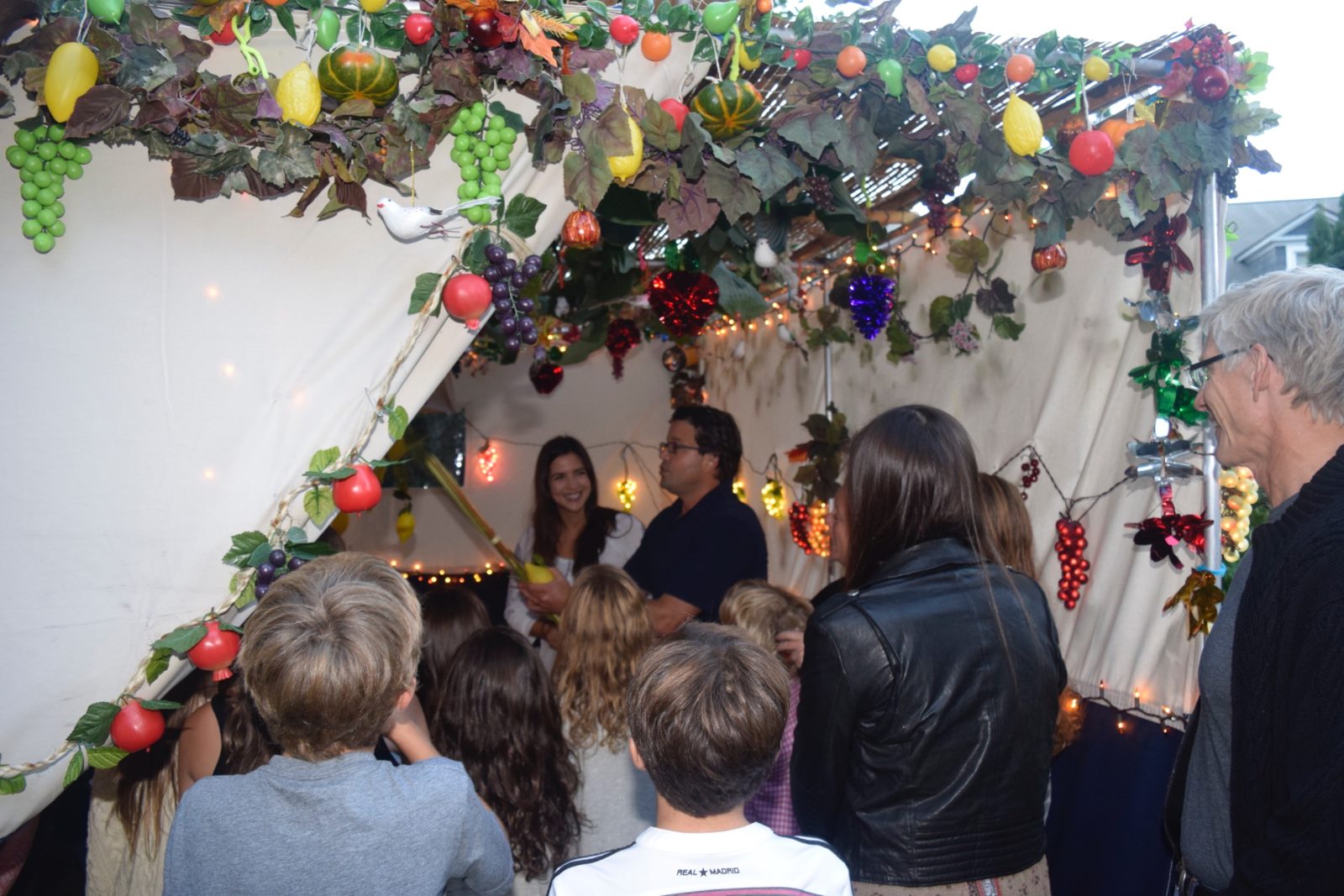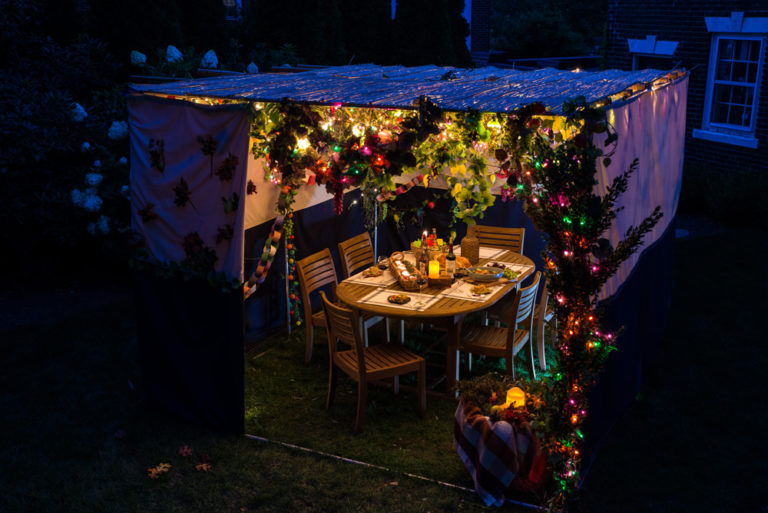Succot is the Festival of Booths. It takes place in the Fall just four days after Yom Kippur. It is a seven-day holiday (eight days outside the Land of Israel), a time for communal celebration following the intensity of the High Holy Days and is a celebration of the harvest.
There are two traditional explanations to the origins of the holiday of Succot: the first is that the Israelites dwelt in succot after the Exodus from Egypt (Leviticus 23:42-43). According to one rabbinic sage, the wilderness succot (plural of succah) were not physical tents, but “Clouds of Glory” (Babylonian Talmud, Berachot 54b), special clouds God provided for the people to guide and protect them during their 40 years of wilderness wandering (see Exodus 13:21).
The second explanation for Succot is that once our ancestors arrived in the Land of Israel and lived an agricultural lifestyle, farmers built succot while gathering up their produce during the harvest season to maximize their productivity (Exodus 34:22). In fact, one of the names for the holiday is “The Festival of Ingathering.”

In either case, Succot is a time for celebration and is referred to as “The Season of our Joy.” It is an occasion to give thanks for the bounty of life. Dwelling in a succah is also a sign of trust: even as the winter approaches, we trust that God will provide for us throughout the cold and dark months ahead. We sit in our makeshift booths, aware of our vulnerability, as an expression of our faith.
Most Jewish holidays celebrate God’s miraculous intervention at specific moments in ancient Jewish history. For example, on Passover we recall how God freed from slavery in Egypt the Israelites with the Ten Plagues and the Splitting of the Sea of Reeds. And on Hanukkah, we remember God’s support of Judah and his fellow Maccabees against the Syrian-Greek army, and the miraculous jug of oil the Maccabees discovered when they recaptured the Temple in Jerusalem. Succot, however, is a celebration of God’s ongoing presence in the lives of our ancestors and in our lives today.
Further, while most Jewish holidays have agriculture roots, they are more widely known for their connections to their historical narratives. Shavuot (The Festival of Weeks), for example, was originally a celebration of the first fruits of the late spring harvest Succot, however, has maintained a strong connection to the earth because of the central symbols of the holiday: the succah (temporary booth), and the lulav (palm branch, myrtle, and willows) and etrog (citron). This fall holiday offers us the opportunity to reflect on the blessings of the natural world and our place in it.
Succot is immediately followed by the holidays of Sh’mini Atzeret and Simchat Torah. The former is designated as an additional day of “holy assembly,” while the latter is a celebration (simchah = joy) of the completion of the annual cycle of Torah readings (Genesis through Deuteronomy).





